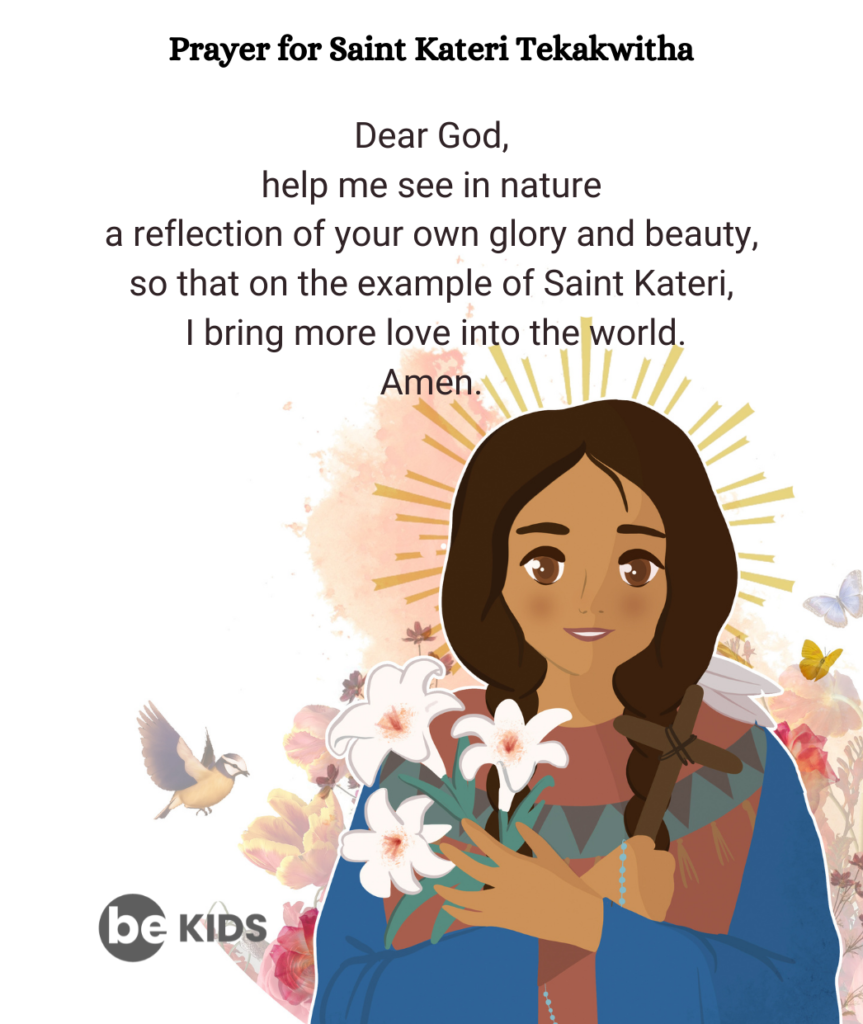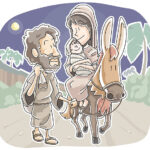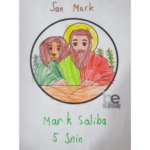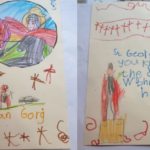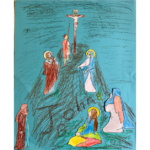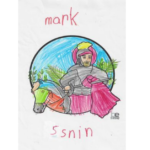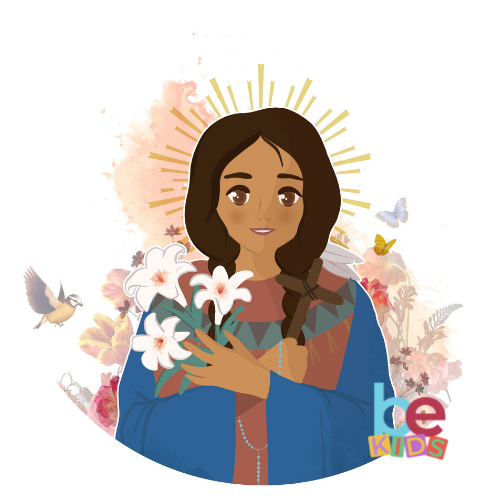
Saint Kateri was a Mohawk, the first canonized Native American. She has been described as ‘a Child of Nature’ and called ‘The Lily of the Mohawk.’’
She was born in 1656, in a Mohawk village in an area that forms part of what we know as New York, a long time before it was drastically changed. Her father was a Mohawk chief, her mother a Catholic Algonquin. When she was 4 years old, smallpox ravaged the village. Kateri became an orphan when both her parents and baby brother died in the epidemic. She was adopted by her aunt and uncle who was also a Mohawk chief.
Although Kateri had survived , she remained weak, partially blind with her face badly scarred. She grew up to be a young woman with a gentle and loving personality. As a Mohawk she had a deep connection with fields, forests, rivers and wildlife. The Mohawks had an appreciation of the nature that surrounded them, managing it tenderly as they hunted, fished and farmed. She often went to the forest to be in touch with God through the ‘voice of nature’ as she kept in her heart the stories and prayers from her Catholic mother and aunt.
When she was 18 years old, she heard more about the Catholic Faith from the Jesuit missionaries who had built a chapel in the area. Eventually, when she was 20 years old, her uncle gave her permission to be baptized. She was given the name Catherine ~ Kateri, for the Mohawks. Her life started to change. She was bullied and treated as an outcast especially when she stopped doing manual work on a Sunday. A year later she left the village and for two months she travelled 200 miles on foot to join a mission of other Indigenous Catholics in Quebec.
She had her first Holy Communion when she was 21. Her life at the mission was a life of prayer, penance, helping the poor and the sick besides carrying out other manual work. Kateri was unable to read and write, but she still passed on stories about Jesus to the young ones. She had made a vow of virginity stating that her spiritual strength came from the Eucharist and the Crucifix. Although always displaying a positive disposition, Kateri always remained a sickly young woman. Her health continued to deteriorate and she died when she was 24 years old. Two Jesuit priests and others present at the moment of her death, witnessed how her face was cleared from the smallpox blemishes, taking on a beautiful hue.
St. Kateri Tekakwitha is the Patron Saint of Native Americans, ecology and the environment.
